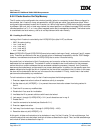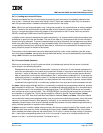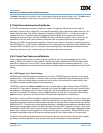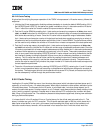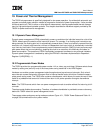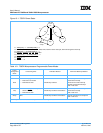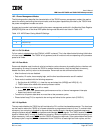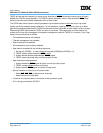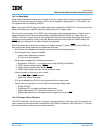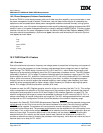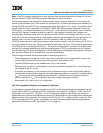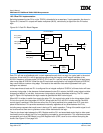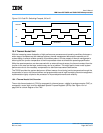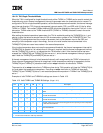
User’s Manual
IBM PowerPC 750GX and 750GL RISC Microprocessor
Power and Thermal Management
Page 338 of 377
gx_10.fm.(1.2)
March 27, 2006
750GX will then be able respond to a snoop cycle. Assertion of QACK following the snoop cycle will again
disable the 750GX’s snoop capability. The 750GX’s power dissipation while in nap mode with QACK
deas-
serted is the same as the power dissipation while in doze mode.
The 750GX also allows dynamic switching between nap and doze modes to allow the use of nap mode
without sacrificing hardware snoop coherency. For this operation, negating QACK
at any time for at least
eight bus cycles guarantees that the 750GX has transitioned from nap mode to doze mode in order to snoop.
Reasserting QACK then allows the 750GX to return to nap mode. This sequencing could be used by the
system at any time with knowledge of what power management mode the 750GX is in currently, if any. Nap
mode can be summarized as follows:
• Time base/decrementer still enabled.
• Thermal-management unit enabled.
• Most functional units disabled.
• All nonessential input receivers disabled.
• Nap mode is enabled with the following sequence:
1. Set nap bit (HID0[9] = 1); clear doze and sleep bits (HID0[8] and HID0[10] = 0).
2. 750GX asserts quiesce request (QREQ
) signal.
3. System asserts quiesce acknowledge (QACK
) signal.
4. 750GX enters nap mode after several processor clocks.
• Nap mode bus snoop sequence:
1. System deasserts QACK
signal for eight or more bus clock cycles.
2. 750GX snoops address tenures on the bus.
3. System asserts QACK
signal to restore full nap mode.
• Several methods of returning to full-power mode:
– Assert INT
, MCP, SMI, or decrementer interrupts.
– Assert hard reset or soft reset.
• Transition to full-power takes no more than a few processor cycles.
• PLL running and locked to SYSCLK.



